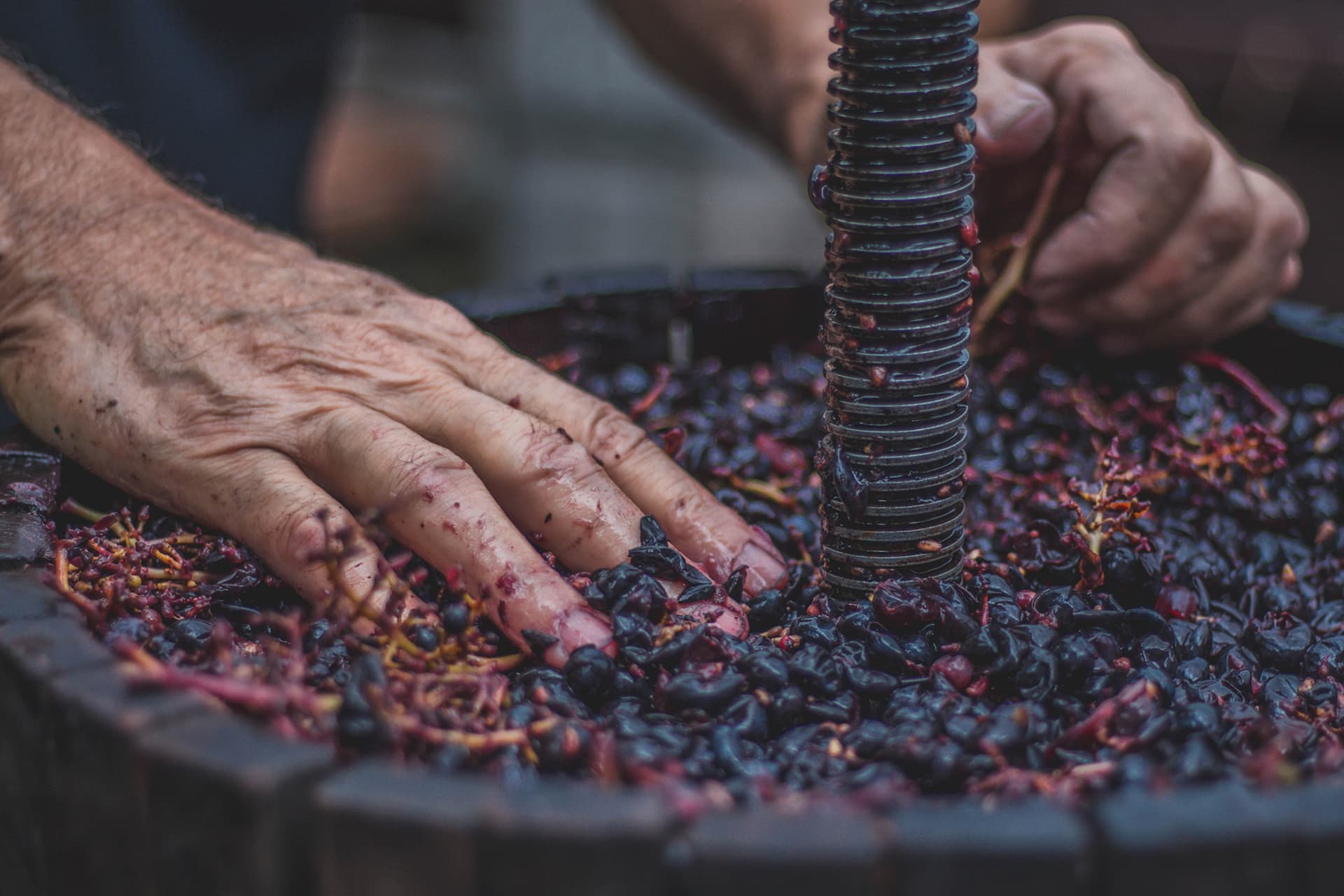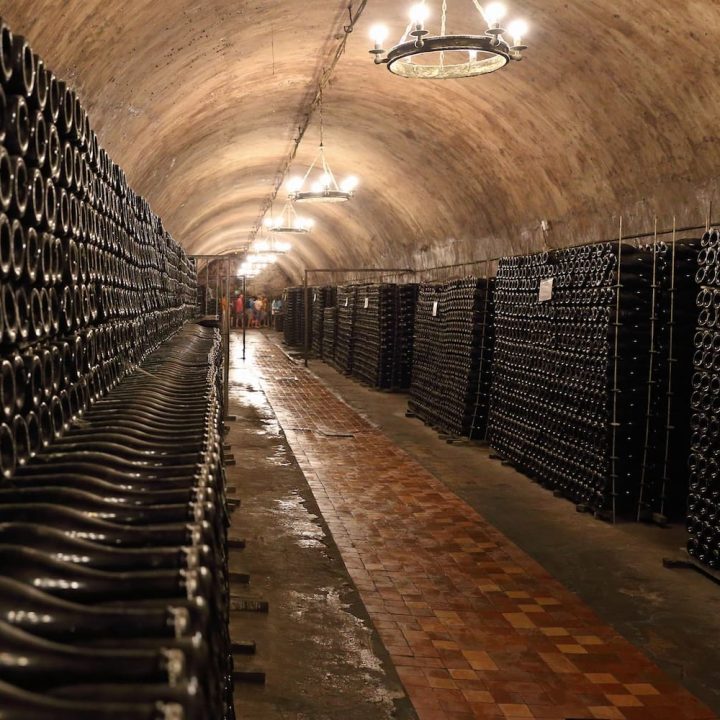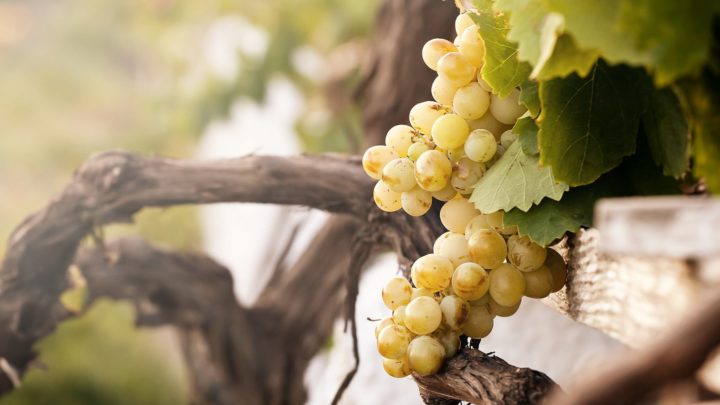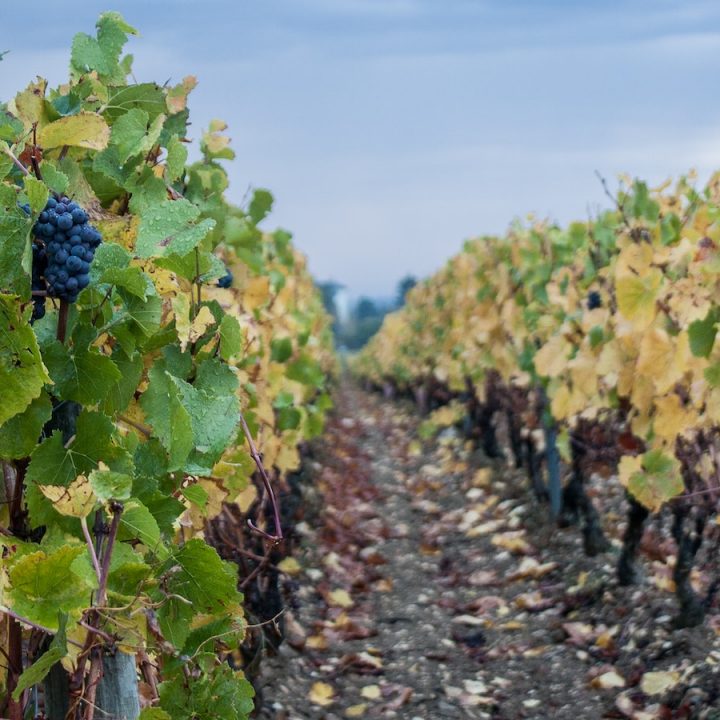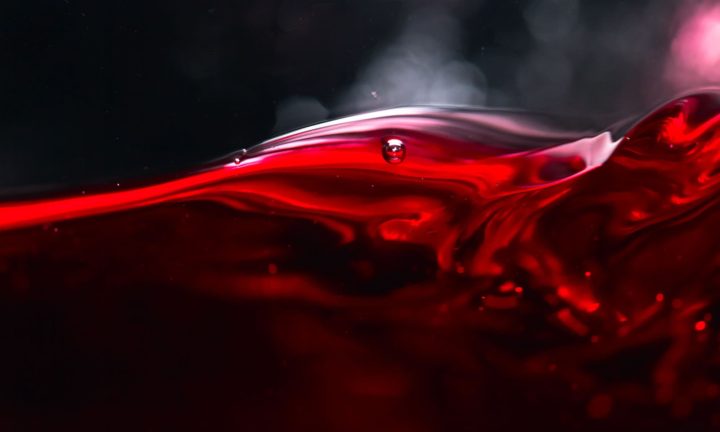Tannins are responsible for the furry feeling you get after taking a sip of red wine. Tannins add another level of complexity to red wines, provided they have been well incorporated into the wine by the winemaker. They belong to the group of secondary plant compounds (polyphenols). Its strong antioxidant property protects the wine from oxygen and its antibacterial effect further stabilizes the wine. In this article you will learn interesting facts about tannins in red wine.
When we hear the word tannin, we think primarily of wine, but tannins are found in many plants. They are mainly found in the woody and green parts of the plant, where their astringent effect deters predators. The tannins found in the wine come almost exclusively from the berry skins. The tannic acid of the stems and fruit seeds, due to their bitter and phenolic taste, are undesirable in wine.
What are tannins?

Tannins form a group of diverse plant tannins and bitter substances and are technically known as polyhydroxyphenols. In oenology, more than 30 species are known, not all of which have a positive effect on the wine. As secondary plant substances, they are not vital for plants, but serve as a defense against predators. Their bitter taste and astringent effect prevent them from preying on the plant.
The name tannin is not coincidentally reminiscent of a well-known coniferous tree. The bark and wood of the fir contain large amounts of these tanning agents, which tanners used to use to make leather. They were used to tan the raw animal skin and turn it into leather. Even today, traditional tanners use these substances for preservation.
Berry skin, seeds and stems: This is where the tannins in the wine come from
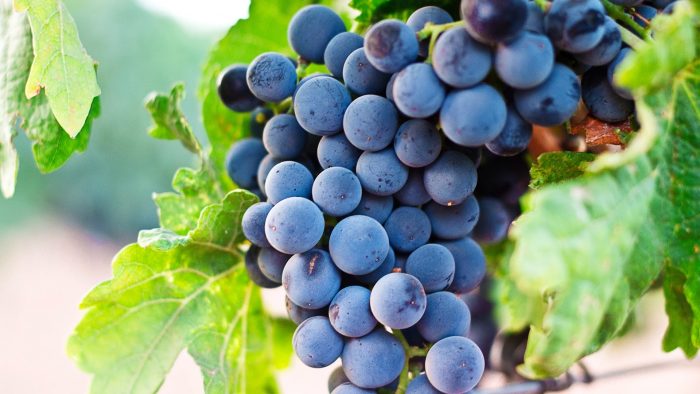
The tannins that we perceive later in the wine are not in the pulp of the grapes. They are found exclusively in the skins, seeds and grape stems – the so-called raps. They serve as protective plant substances for the vine and keep potential predators from attacking the plant over a large area. Tannins are found not only in grape varieties with red- or blue-skinned berries, but also in white grape varieties. However, they are undesirable in white wines, which is why the grapes are pressed after harvest and only the must is fermented.
An exception are the so-called orange wines. Similar to red wines, these are fermented briefly on the mash. This gives them their namesake color and a light tannin content.
Shell thickness and kernel to flesh ratio as the most important factors
How rich in tannins a wine is depends strongly on its grape variety. The thickness of the berry skin and the ratio of pulp to grape seeds are the most important factors. Grape varieties with a thick skin produce wines richer in tannins than their thin-skinned relatives, if produced identically.
In the following list you will find a few grape varieties with thick and thin skins.
Grape varieties with thick skin
- Cabernet Sauvignon
- Syrah / Shiraz
- Nebbiolo
- Dornfelder
- Malbec / Côt
Grape varieties with thin skin
- Pinot Noir
- Grenache
- Gamay
- Merlot
- Cabernet Franc
Good and bad tannin: are there differences?
A distinction is made between immature and mature tannins. The immature tannins are called green tannins in wine terminology.
Green tannins, as the name suggests, are found in the green parts of the grape (stems, seeds, unripe grape skin). Their green and bitter taste can not be integrated into the wine even through prolonged storage. The greatest danger to wine comes from unripe berry skins, as their tannic acid makes up the largest proportion in wine.
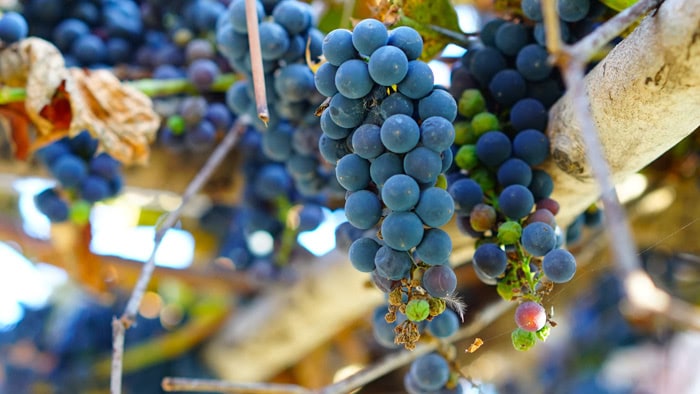
Ripe tannins are found in the fully ripe berry skins and form long-chain molecular compounds. The ripening process has removed their green and bitter notes.
The winemaker determines the degree of maturity of the tannins sensory by tasting the berries before harvesting. By the way, must weight is not a reliable factor for tannic acid maturity. The tannins (berry skins) usually ripen more slowly than the pulp.
Maceration releases tannins from the grape skins
Tannins are found almost exclusively in red wines, which is related to their production. Unlike white wines, they undergo a maceration. In this process, the must lies together with the skins, seeds and stalk residues in the fermentation tank. Through the incipient maceration, the tannins are released from plant parts.
The amount of tannins released during the time on the mash depends on the fermentation temperature and duration. A short and hot fermentation is considered modern. The mash ferments here at 30 – 35 °C for a short time (sometimes less than two days). The must is then drawn off and fermented further without solids. In this way, the cellar master ensures that only slightly soluble tannins from the skins pass into the wine. The unwanted tannins remain in the seeds and stem residues.
In the traditional low-temperature fermentation, the mash ferments for up to 30 days and leaches the components. The longer contact time increases the risk of unwanted tannins passing into the wine.
Aging in barrique reduces the tannin content in the wine
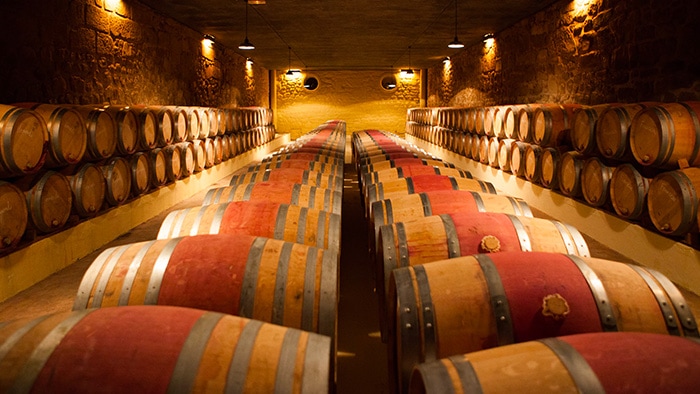
Once the maceration is complete, the winemaker transfers the must to the barrel, where it continues to ferment. The aging, type and size of the wooden barrel affect the tannic acid in the wine.
Almost all new wine barrels are made wine green before they are used. During this procedure, the barrel is treated with water, which flushes out most of the tannins and dyes from the barrel staves. Already from the second filling, these barrels no longer release their own tannins into the wine. In oenology, this is called neutral wood.
An exception here is the barrique. These small barrels are not made wine green and release tannins and flavors to the wine. In relation to its volume, the wine in a barrique has a large contact surface with the barrel wood. Since barrel staves are not airtight, the wine has a lot of oxygen contact.
The antioxidant tannins react with the oxygen and the pigments (anthocyanins) of the wine to form longer-chain and more complex molecules. These grow over time, flocculate and settle to the bottom of the barrel. This process is called polymerization. Complex tannin molecules provide a velvety mouthfeel.
It is a misconception that aging in barrique enriches the wine with tannins. Although new barrels release tannins into the wine, they break down again due to the high oxygen exchange. At the end of its barrel aging, a barrique wine has less tannins than before.
Are there tannins also in white wine?
Tannins are generally undesirable in white wine, as they would dominate the flavor of the delicate wines. For this reason, the winemaker presses the grapes after harvest and ferments only the must obtained (must fermentation). To ensure that as little tannin as possible gets into the wine, a particularly gentle press is required. With it, the winemaker ensures that the grape seeds are not damaged and that the aggressive tannins remain in them.
Orange wines are an exception to this rule. They are white wines vinified like red wines. They undergo a short maceration, which explains their namesake color. In addition to the color pigments, some tannins are also released from the grape skin. Among connoisseurs can wonderfully argue about this type of wine. The taste characteristics of the tannins mask the typical aroma of the grape variety . Orange wines therefore have a very particular style that does not suit everyone. However, the normal wine drinker hardly comes into contact with an orange.
Scientifically explained: This is where the furry feeling on the tongue comes from
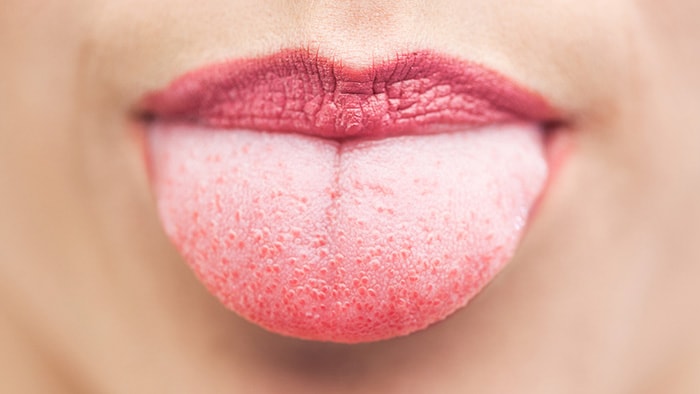
Anyone who has ever had a red wine in the glass knows the typical mouthfeel it leaves behind. It ranges from a slightly rough feeling on the tongue to the impression that the entire mouth dries out and contracts.
However, this feeling is not an impression of taste, as many believe. In fact, it occurs due to a reduced gliding ability of the oral mucosa and is perceived through our sense of touch.
For a long time, it was not known what this astringent mouthfeel was all about. In 2016, researchers from the Lanzhou Institute of Chemical Physics finally found the answer to this question. In laboratory experiments, they determined what happens in our mouth after a sip of red wine.
Our oral mucosa has a group of lubricating proteins. These are responsible for food sliding smoothly down our esophagus without getting stuck in our throat. These so-called mucins ensure that our mouth always remains moist and slippery. Without them, we would not be able to eat solid food.
If you enjoy a sip of red wine, the tannins contained in the wine bind to the mucins and cause them to flocculate – our oral cavity loses its lubricating film. So the rough feeling is not a strange taste, but the result of a biochemical process that briefly dissolves the lubricating film of your oral mucosa. Your tongue no longer slides and gets a little stuck everywhere. The strength of this effect depends on the tannin content of the wine.
This phenomenon also occurs with other beverages rich in tannins, such as black tea.
